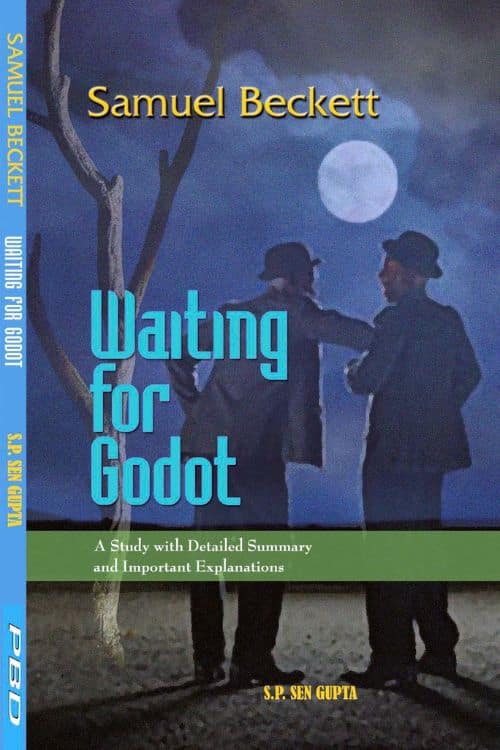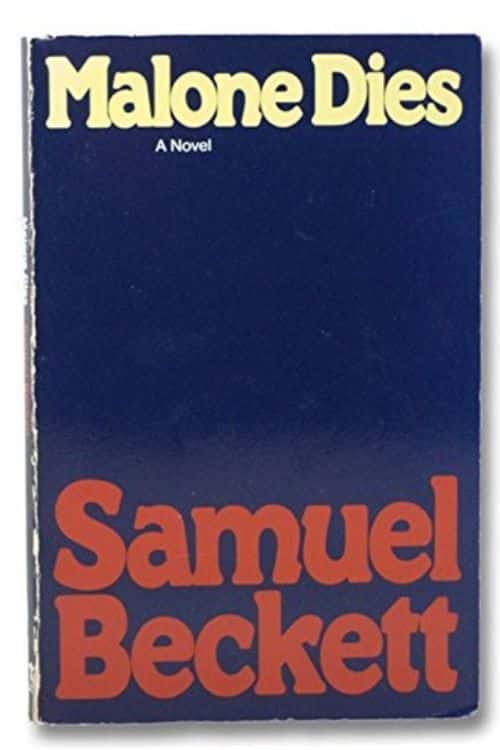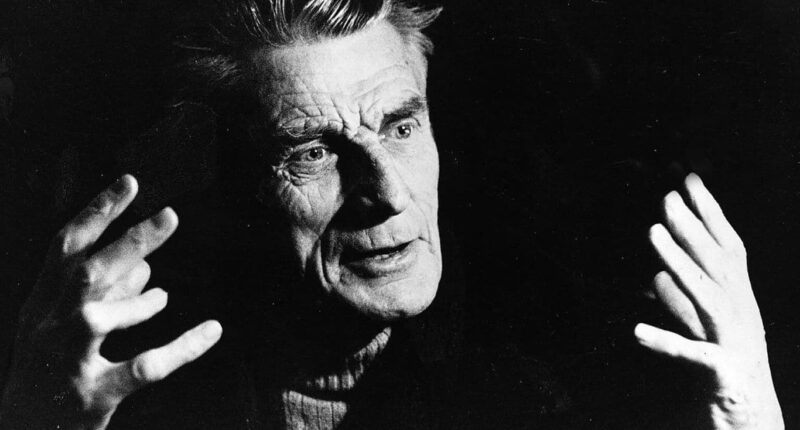Samuel Beckett was a visionary of the 20th-century literary world. With his unique and pioneering style, he redefined the boundaries of modern theatre and fiction, leaving a lasting impact on the literary world. From the absurdist masterpiece “Waiting for Godot” to the poignant “Krapp’s Last Tape,” Beckett’s works have captivated audiences and challenged them to think beyond the conventional. In this article, we will be taking a look at the top 10 books of Samuel Beckett that have cemented his legacy as one of the greatest writers of the 20th century.
Top 10 Books of Samuel Beckett
Waiting for Godot (1952)

Waiting for Godot is a play by Samuel Beckett that is considered a landmark in 20th-century theatre. The play takes place in a desolate landscape and follows the antics of two tramps, Vladimir and Estragon, as they pass the time waiting for the arrival of a mysterious figure named Godot. Although Godot never arrives, the two men continue to wait for him, day after day. The play is a meditation on the human condition, exploring themes of hope, despair, and the meaning of existence. With its spare dialogue and absurdist humor, “Waiting for Godot” has become one of the most influential and widely-produced plays of the modern era, cementing Beckett’s reputation as a master of the theatrical form.
Molloy (1951)

Originally written in French and later translated into English. It is considered one of Beckett’s most important works, and is one of three novels collectively known as the “Trilogy.” The novel follows the journey of two characters, Molloy and Moran, as they wander through a fragmented and disintegrating landscape, searching for purpose and meaning in their lives. Molloy is a disabled and aging man, who reflects on his past experiences and the world around him, while Moran is an exhausted and increasingly disillusioned detective who is on the trail of Molloy. Through their encounters and musings, Beckett explores themes of identity, memory, and the human condition, creating a powerful and poignant vision of the modern world.
Malone Dies (1951)

Malone Dies is a novel by Samuel Beckett, and the second in his “Trilogy” of novels that also includes “Molloy” and “The Unnamable.” Like the other books in the trilogy, “Malone Dies” is characterized by its fragmented narrative, stream-of-consciousness writing style, and exploration of existential themes. The novel follows the protagonist, Malone, as he lies in bed in a hospice, reflecting on his life and surroundings. Through Malone’s thoughts and experiences, Beckett grapples with questions of identity, mortality, and the meaning of existence. Despite its dark and often disorienting themes, “Malone Dies” is a powerful and deeply affecting work, showcasing Beckett’s skill as a writer and his profound insights into the human condition.
The Unnamable (1953)

Like the other books in the trilogy, “The Unnamable” is characterized by its fragmented narrative, stream-of-consciousness writing style, and exploration of existential themes. The novel is set in a world of unrelenting emptiness and despair, and follows the journey of a nameless protagonist as he reflects on his own existence and the world around him. Through the protagonist’s thoughts and experiences, Beckett grapples with questions of identity, mortality, and the meaning of existence, ultimately creating a powerful and profound vision of the human condition.
Krapp’s Last Tape (1958)

The play takes place on Krapp’s birthday, as he listens to recordings he made of himself on previous birthdays and reflects on his life. Krapp is a solitary figure, and the play explores themes of aging, solitude, and the passage of time. Through Krapp’s musings, Beckett presents a bleak and often humorous vision of the human condition, as Krapp comes to terms with his own mortality and the failures and regrets of his life. “Krapp’s Last Tape” is considered one of Beckett’s most important works, and is widely regarded as a masterpiece of 20th-century theatre. The play is known for its minimalist production requirements, and has been performed by many of the great actors of the 20th century, including Patrick Magee and Harold Pinter.
Endgame (1957)

The play takes place in a single room and follows the lives of four characters: Hamm, who is blind and confined to a wheelchair; Clov, his caretaker; Nagg and Nell, Hamm’s parents, who live in dustbins on either side of the stage. The play is a bleak and often humorous meditation on the human condition, exploring themes of death, decay, and the passage of time. Through the interactions of these characters, Beckett presents a vision of a world that is both desolate and absurd, as the characters attempt to find meaning and purpose in their lives despite the inevitability of death.
Mercier and Camier (1946)

It is considered one of Beckett’s earliest works, and is notable for its minimalist style and exploration of existential themes. The novel follows the journey of two characters, Mercier and Camier, as they wander through a fragmented and absurd world, searching for meaning and purpose in their lives. Through their encounters and musings, Beckett explores themes of identity, memory, and the human condition, creating a powerful and poignant vision of the modern world. Despite its relatively experimental style and challenging themes, “Mercier and Camier” is widely regarded as a significant work of 20th-century literature, and is a testament to Beckett’s skill as a writer and his profound insights into the human experience.
How It Is (1961)

The novel takes the form of a monologue, as an unnamed narrator recounts his journey through a dark and often incomprehensible world, struggling to survive against the forces of nature and the limitations of his own body. Through the narrator’s musings, Beckett grapples with questions of identity, mortality, and the meaning of existence, presenting a powerful and often bleak vision of the human condition. Despite its challenging style and themes, “How It Is” is widely regarded as a significant work of 20th-century literature, and is a testament to Beckett’s skill as a writer and his enduring insights into the human experience.
Stories and Texts for Nothing (1955)

It is a collection of thirteen short prose pieces, first published in 1955. The texts are characterized by their fragmented and stream-of-consciousness style, and explore themes of identity, mortality, and the human condition. Through the thoughts and experiences of its various narrators, Beckett presents a bleak and often absurd vision of the world, grappling with questions of existence and the search for meaning in a meaningless universe. Despite their challenging style and themes, the texts in “Texts for Nothing” are considered some of Beckett’s most important works, and are widely regarded as masterpieces of 20th-century literature. The collection is a testament to Beckett’s skill as a writer, and his ability to create powerful and haunting visions of the human experience.
The Lost Ones (1971)

The novella is characterized by its minimalist style and exploration of existential themes, and takes the form of a narrative about a group of people who live in a cylindrical underground space, searching for a way out. Through their experiences and interactions, Beckett grapples with questions of identity, mortality, and the human condition, creating a powerful and often bleak vision of the world. Despite its challenging style and themes, “The Lost Ones” is widely regarded as a significant work of 20th-century literature, and is a testament to Beckett’s skill as a writer and his enduring insights into the human experience. The novella is known for its spare and evocative language, as well as its imaginative and surreal vision of the world, and is considered one of Beckett’s most accomplished works.
Also Read: Biography of Samuel Beckett



